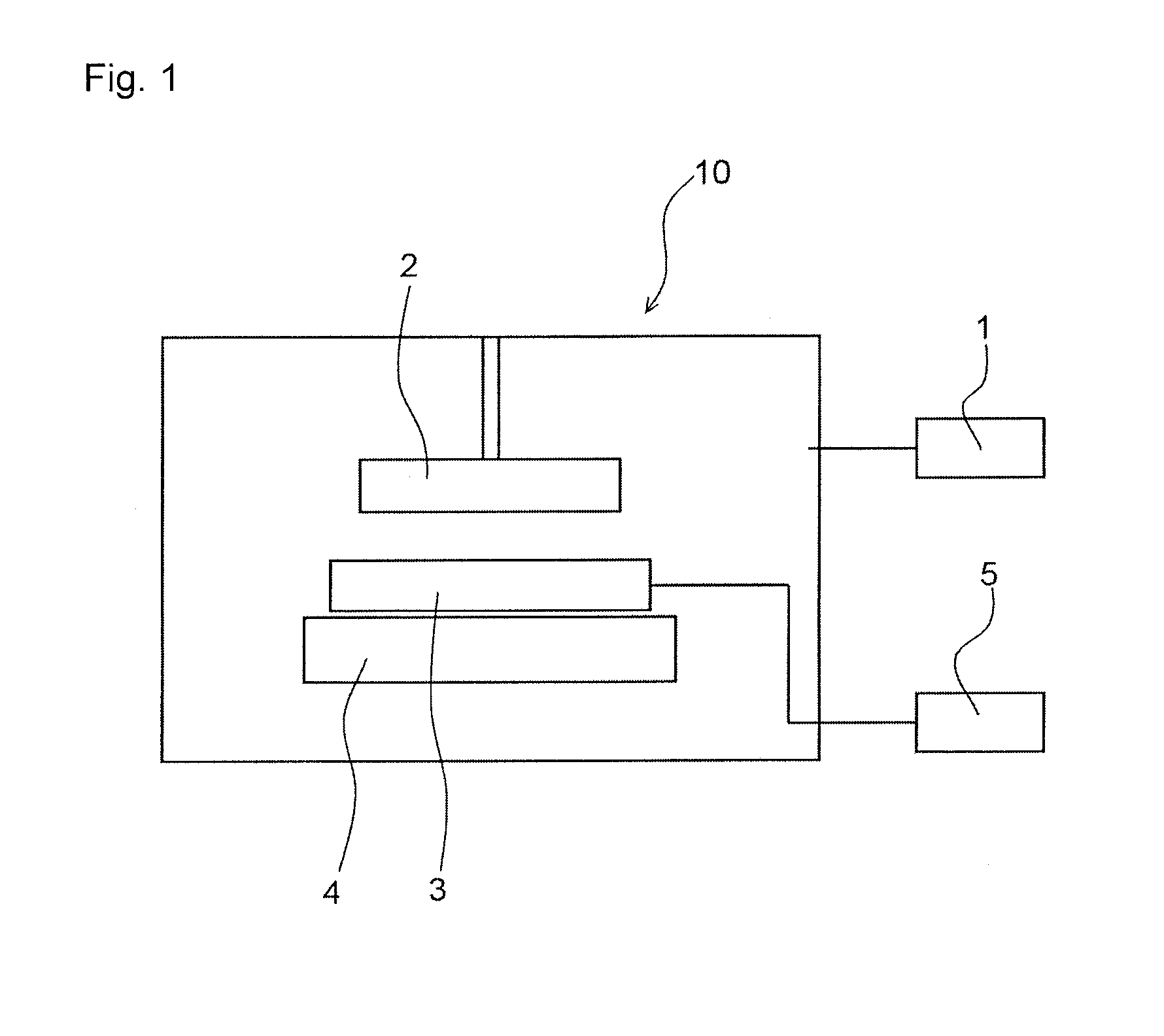Method and apparatus for manufacturing solid electrolytic capacitor
a solid electrolytic capacitor and electrolytic capacitor technology, which is applied in the manufacture of capacitors, electrolytic capacitors, and electrolytic capacitors, etc., can solve the problems of inconvenient powder sintered body method, inability to directly apply method, and inability to use aluminum formation foil method for aluminum formation foil, etc., to achieve high capacitance, reduce the effect of esr and increase the distance of dipping
- Summary
- Abstract
- Description
- Claims
- Application Information
AI Technical Summary
Benefits of technology
Problems solved by technology
Method used
Image
Examples
example 1
[0041]Commercial niobium powder for a capacitor having nominal capacitance of 200,000 μF·V / g was sintered with a niobium wire to thereby produce a molded body of about 20 mg in a size of 2×2×1.4 mm. The molded body was subjected to heat treatment at 1250° C. under −3 Pa for 30 minutes to obtain a sintered body. By conducting chemical formation treatment of the obtained sintered body in a 1% phosphoric acid aqueous solution at 80° C. for 300 minutes by applying 30 V, a dielectric layer was formed on the surface of the sintered body to produce an anode body. The anode body had a capacitance of 132 μF in 30% sulfuric acid solution and an average pore diameter of 0.32 μm measured by mercury intrusion.
[0042]20 units of the anode body were welded to the substrate so that the powder sintered body parts of the anode body lie in a straight line and the substrate was fastened to the holder of the dipping device. An aqueous dispersion liquid of the conductive polymer (poly-(3,4-ethylenedioxyth...
example 2
[0047]20 units of solid electrolytic capacitors were produced by the same operation as in Example 1 except that an aqueous dispersion liquid of conductive polymer (poly-(3,4-ethylenedioxythophene)) having an average particle diameter of 20 nm adjusted to have a solid content of 2.3% and the viscosity of 60 mPa / s was used instead of the aqueous dispersion liquid of conductive polymer (poly-(3,4-ethylenedioxythophene)) having an average particle diameter of 20 nm adjusted to have a solid content of 1.1% and the viscosity of 30 mPa / s. The average capacitance at 120 Hz and equivalent series resistance at 10 kHz of the obtained capacitors are shown in Table 1.
example 3
[0048]A manganese dioxide layer was formed on the dielectric layer of the anode body by the same operation as in Example 1 except that 30% manganese nitrate solution was used instead of the aqueous dispersion liquid of conductive polymer, and the drying was performed under conditions at 200° C. for 25 minutes. Also, at the end of the fifth, tenth, fifteenth, twentieth and twenty-fifth dipping, the step of repairing the damage of the dielectric layer resulting from forming the manganese dioxide layer was added by subjecting the anode body to chemical formation in 1% phosphoric acid solution at 80° C. and 15 V for 30 minutes.
[0049]The average capacitance at 120 Hz and equivalent series resistance at 10 kHz of the thus-obtained capacitors are shown in Table 1.
PUM
| Property | Measurement | Unit |
|---|---|---|
| diameter | aaaaa | aaaaa |
| pore diameter | aaaaa | aaaaa |
| pressure | aaaaa | aaaaa |
Abstract
Description
Claims
Application Information
 Login to View More
Login to View More - R&D
- Intellectual Property
- Life Sciences
- Materials
- Tech Scout
- Unparalleled Data Quality
- Higher Quality Content
- 60% Fewer Hallucinations
Browse by: Latest US Patents, China's latest patents, Technical Efficacy Thesaurus, Application Domain, Technology Topic, Popular Technical Reports.
© 2025 PatSnap. All rights reserved.Legal|Privacy policy|Modern Slavery Act Transparency Statement|Sitemap|About US| Contact US: help@patsnap.com


